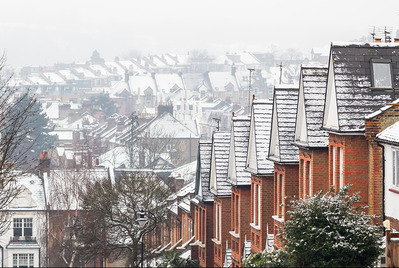
Are you investing in Buy to Let as part of your pension plan? Some landlords have chosen to put their money in property instead of financial pension pots, while others are using Buy to Let to supplement other income plans for later life.
Even if you’re not thinking too much about life post-retirement just yet, it’s sensible to have a plan for the future in place and to keep an eye on how your property returns are stacking up against other types of investment.
One of the big benefits of property is that you can enhance your returns by taking a mortgage. The other big benefit is that it’s possible to get good levels of return on both income and capital growth over time. Obviously, you’ve got to look after the property well to (a) protect its market value and (b) achieve the best possible market rent. But how do you do that and what else do you need to think about to make sure your money’s working hard for you?
Here are some of the main actions you should be taking now, to make sure your property delivers well into the future:
Plan ahead
The first thing to do is decide what kind of pension you’re going to need or want. Once you have an idea of how much ongoing income and/or lump sum returns you expect property to deliver, you can then work out whether your Buy to Let is on track for that.
The best way to make sure your financial plan is realistic and achievable is to work with a qualified financial adviser or wealth manager who is regulated, understands property investment and is able to compare returns from different pension plans.
Check rents and capital growth are rising in line with inflation
In order for your property to be ‘worth’ the same each year, its capital value has to increase in line with inflation – and hopefully by more than that! The same goes for rent: if you’re not increasing the amount you charge your tenants each year by at least the rate of inflation, you’re effectively earning less.
Over the last 20 years, inflation has run at an average of around 3% a year. Obviously, there will be fluctuations and capital values tend to be more susceptible to annual rises and falls than rents. But if you can manage to raise your tenant’s rent by 3% each year and check the property’s value every 12 months, you’ll be able to see whether your investment is keeping up with inflation over time.
If it is, great. But if it’s not, come and speak to us. We might be able to recommend some changes that could improve your profits and capital value, or even find another rental property that could perform better for you.
Maximise your rental income
There are two key boxes you need to check if you’re going to attract the best tenants, who will pay a good market rent:
- You’ve got to provide the kind of accommodation and facilities they’re looking for, and
- You must keep the property in very good condition.
If you’ve owned your Buy to Let for a number of years, have you kept up to date with what today’s tenants expect? Contact your local Your Move branch to find out about current and likely future demand in the area.
Keep your costs to a minimum
In order to keep your property in good condition so it remains an attractive rental for tenants and holds its capital value well, you’ve got to keep investing money. The best way to make sure you keep on top of things and don’t overspend is to put together a maintenance schedule and budget for the next 5-10 years. That way, you’ll know how much the property’s going to cost you and when you’ll need to spend the money.
And to make sure you get to any unforeseen issues before they become a big and expensive problem, carry out a full interior and exterior inspection every 6-12 months. Read more in our article, ‘‘How to spend less on maintaining your rental property’
If we manage your let for you, we would carry out regular inspections and our experts will highlight any maintenance issues that need fixing – or if new rules are implemented – upgrading.
Check your returns regularly
If you’ve invested in property for your pension, you need to make sure it’s performing better than a more traditional financial pension scheme would have. To calculate your annual (pre-tax) return on investment, take the annual rental profit and divide it by the amount you’ve invested into the property (deposit, refurbishment and furnishing costs, buying costs, etc.).
For example:
- If you invested a total of £40,000 and have a rental profit of £5,000 a year, that’s a 12.5% rental return.
You can also add any capital growth for a more complete picture over time, for example:
- If the same property increased in value by £15,000 over 3 years and you’d had to invest an additional £2,000 into the property, the calculation would be:
£30,000 (£15,000 rental profit + £15,000 increase in capital value) ÷ £42,000 = 71.4% ÷ 3 (years)
= 23.8% annual return
Bear in mind that when you come to dispose of the property, there will be selling costs and probably capital gains tax to pay. Investment returns need to be assessed net of tax.
At Your Move, our teams are experienced at helping landlords ensure their investments are as profitable as possible. So, if you’d like any advice on assessing your portfolio and maximising returns, just get in touch with your local branch at any time.
Is your property achieving the best rent? Get a property valuation today and find out
The Your Move Content Marketing Team



